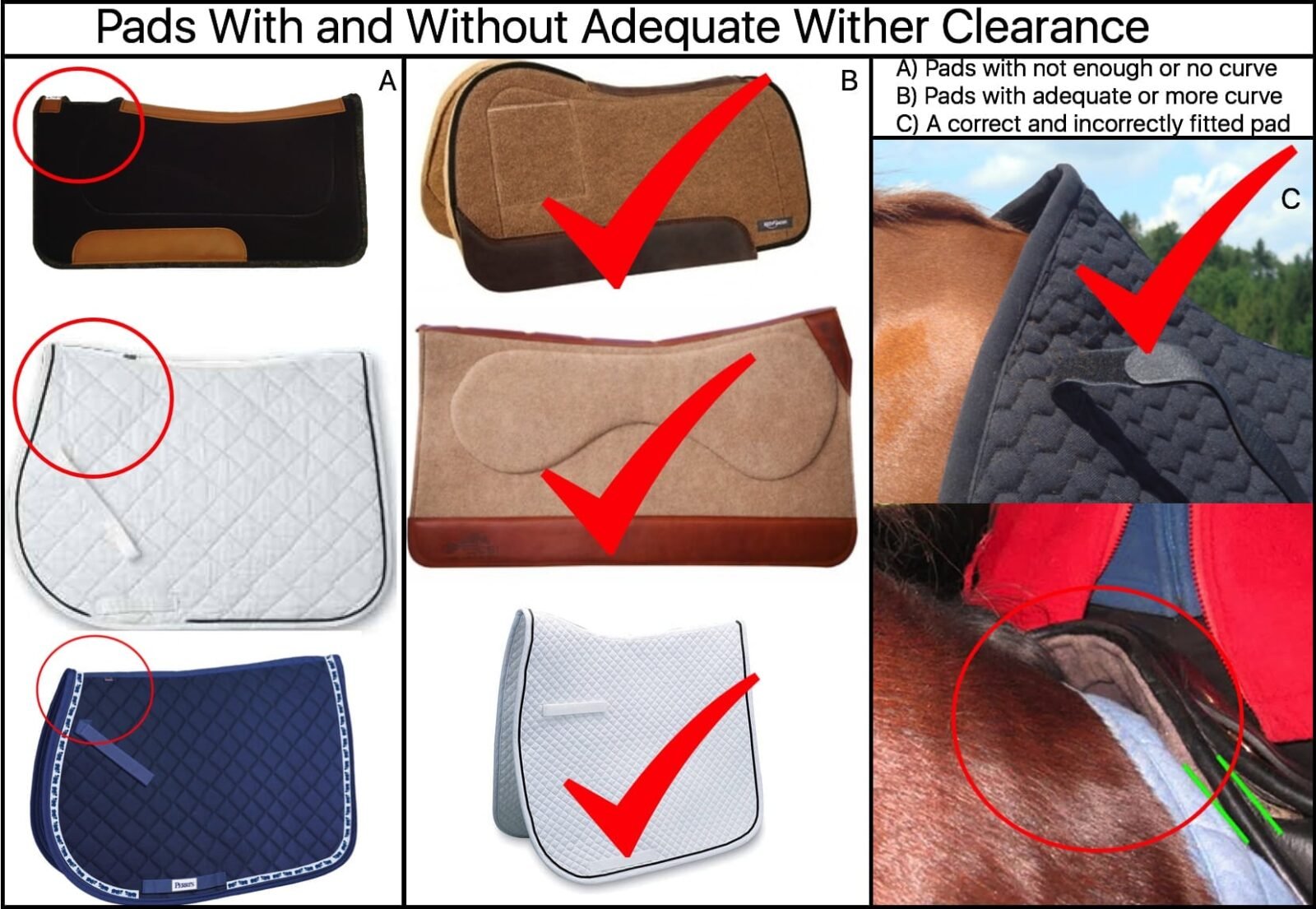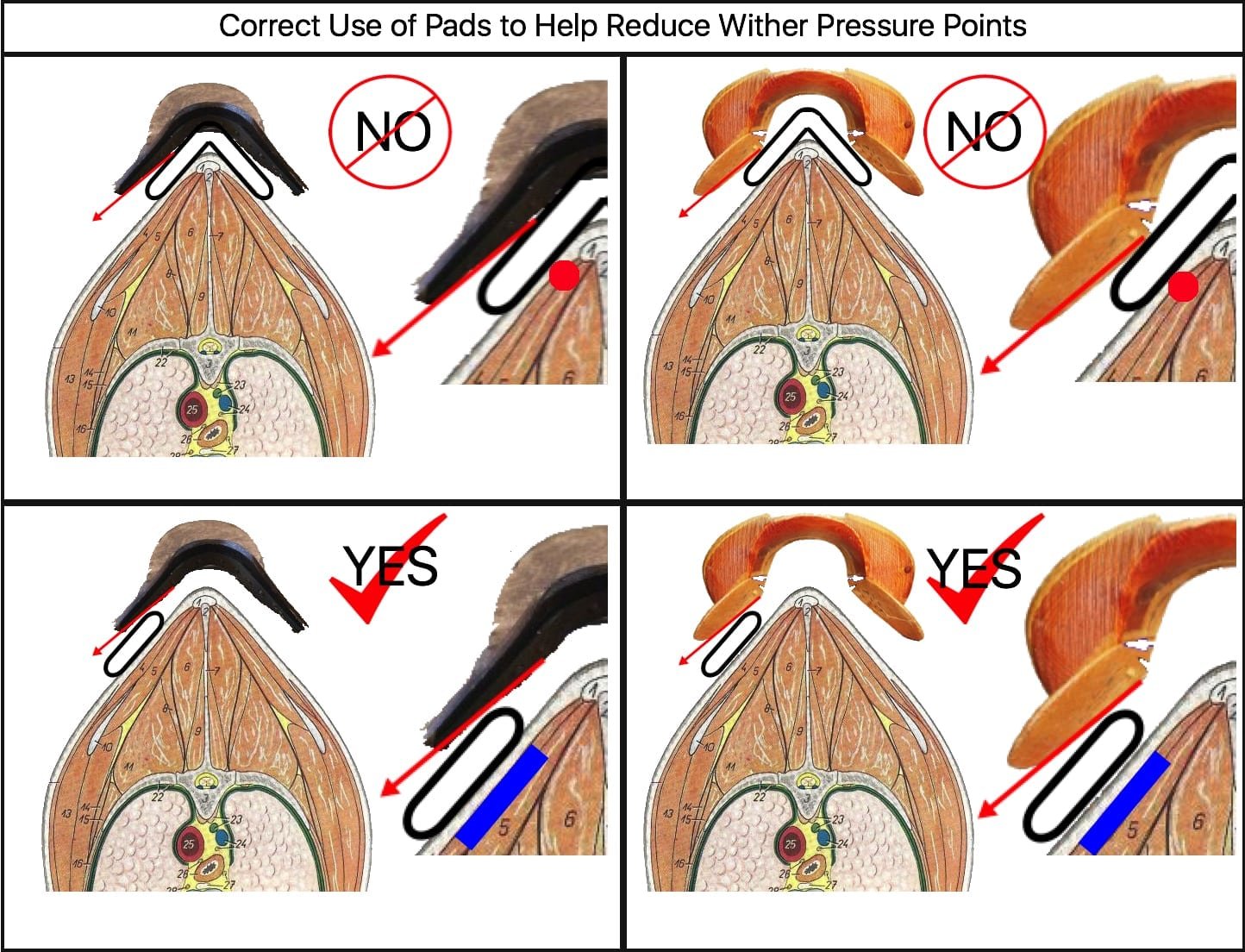Saddle Damage Part 2 – Saddle Pads: Grading on the Curve
While saddle pads are not technically part of the saddle they are instrumental in the saddling process and need to be properly evaluated and fitted. Also to be considered is saddle pads used for assisting fit. By this I mean half pads and shim pads that are designed to help saddles fit better.
I personally believe that a shim or half pad is never a replacement for a well-fitted saddle. Exceptions can be made however due to budget, comfort, back injuries (for horse and/or rider), and horses who share saddles. I speak more about this in my earlier study on saddle pads.
I personally believe that a shim or half pad is never a replacement for a well-fitted saddle. Exceptions are often made because of budget, comfort, back injury (for horse and/or rider), and horses who share saddles.
When it comes time to choose a saddle pad, our number one rule is wither relief or curve to the top of the pad. A saddle pad that is too straight across the horse’s wither can pull down over the spinal processes and cause extreme pressure. Under the front of the saddle running over a horse’s spine, you’ll find the nuchal ligament – this bears a lot of responsibility for holding correct tension in the equine spine during movement, and helps ensure the spine is supported properly. If this ligament is sore or damaged the horse will compensate in other areas sacrificing a correct frame for the back.
Here are a few examples of saddle pads to show what we are looking for in the curve at the front of the pad.
Next, let’s look at fit correction pads. When we aim to correct saddle fit using a pad, we first have to recognize the unsolved issue. I am going to use an example of a tree angle too wide to illustrate how we would correct the fit using a pad.
If you use a half pad or shim pad where the padding spans all the way up to the seam, then it does nothing to relieve these pressure points and can in fact, make the saddle much tighter and more uncomfortable in the shoulder and wither area.
When the shims or padding start further down in the pad and run across the top of the ribcage, we can actually disperse pressure downwards towards the side of the horse and relieve the area of concentrated pressure.
Two of my personal favorite pads to work with to assist with fit are the ThinLine products because as the shims can be placed exactly where we want them and don’t compress. I also like the Split Gel Pad because again it disperses the weight away from the spine and the gels don’t compress. Both products offer English and Western solutions.
I am going to follow up this post with another about pad materials and sheepskin vs no sheepskin. Here I wanted to concentrate on pad shape and shim location as both are very important considerations when purchasing a pad for your horse especially when a fit issue is being addressed!





